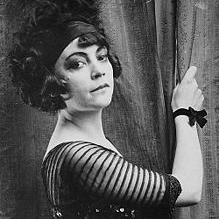Divas down under: the gendered reception of European silent film stars in pre-WWI Australia

Already by the early 1910s, cinema attendance was a national pastime in Australia, with 12.5% of the population going to the pictures every Saturday night. Australian film production was innovative but too limited to meet demand and Hollywood was still a grove of orange trees, so a large percentage of films shown in Australia were imported from Europe. Although most films were advertised simply by their title and sometimes the production company, the emergence of the monopoly-distribution system led to the rise of the star culture that sold films on the strength of an actor or actress’s name. Most of the early stars whose films were shown widely across Australia between 1911 and 1915 were women, including the Danish actress Asta Nielsen and the German actress, Henny Porten. This talk maps the scope of these female European stars’ popularity in pre-World War I Australia and explores the way the growing political tensions between Britain and Germany informed the reception and circulation of their films.
This public lecture is hosted by the School of Literature, Languages and Linguistics and the Gender Institute.






